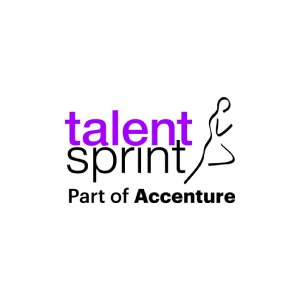How to Be a Great Leader at Work

Leadership isn’t about a title, it’s about impact. A great leader at work doesn’t just manage teams; they inspire trust, create purpose, and drive people to perform beyond expectations.
Employee dissatisfaction and low employee engagement can significantly impact business performance. According to Gallup, the two points drop in global employee engagement in 2024 costed USD438 billion (~ INR39 trillion) to global economy. Engaged employees can produce better business outcomes, and leaders play an important role in driving this engagement. Clearly, great leadership is a skill that demands self-awareness, adaptability, and intent.
So, how to be a great leader at work? Let’s explore the core traits, strategies, and actionable steps that define truly impactful leaders in today’s evolving workplace.
Core Traits of Great Workplace Leaders
1. Self-Awareness and Emotional Intelligence
The foundation of leadership lies in self-awareness. Leaders with high emotional intelligence understand their emotions and those of others, creating stronger, more empathetic connections.
Being a good leader is not about controlling the outcomes, but about influencing people to achieve them. It’s the balance of vision, empathy, and communication that transforms ordinary managers into extraordinary leaders.
2. Integrity and Trust Bonding
Trust is non-negotiable in leadership. Employees follow leaders they believe in, not those they fear. Consistent transparency, ethical decision-making, and having both success and failure define the characteristics of effective leaders.
When trust is high, engagement increases! According to a study by Harvard Business Review, employees in high-trust companies report 74% less stress, and 50% higher productivity.
3. Vision and Strategic Thinking
Great leaders don’t just focus on day-to-day operations, they think long-term.
They connect individual roles to a broader vision, enabling people to see the “why” behind their work.
For instance, the effort by former PepsiCo CEO Indra Nooyi – Performance with Purpose highlighted her visionary mindset. The third part of the strategy was significantly important. She wanted to make PepsiCo a destination dedicated to talent, where nobody wants to leave.
4. Adaptability and Learning Agility
Change is constant, and the ability to adapt is a hallmark of great leadership.
In the age of digital transformation and hybrid workplaces, adaptability in leadership helps teams stay resilient during uncertainty.
5. Empathy and People-Centric Mindset
Empathy is the quiet strength that drives loyalty. Leaders who listen, understand, and prioritise well-being create psychologically safe teams, essential for innovation and retention.
Thus, empathy in leadership isn’t a “soft skill”, it’s a strategic advantage.
(Read Also: Qualities of a Leader)
Modern Strategies to Lead Today’s Workplace
1. Lead Through Influence, Not Authority
Command-and-control structures have evolved into flatter organisations where persuasion drives results more effectively than compulsion. Smart leaders understand that securing genuine buy-in requires influence rather than formal authority. This approach centres on creating meaningful professional connections and establishing circumstances where colleagues convince themselves.
The most powerful influence strategy combines friendship with authority – the 'Halo Effect'. You can develop this influence through three key channels: technical expertise, strategic relationship-building, and deep organisational knowledge. Unique skills make your insights invaluable, positioning you as the resource others naturally seek for guidance.
2. Build Diverse and Inclusive Teams
Diversity drives innovation. Companies with greater gender and ethnic diversity on executive teams achieve superior financial returns. Beyond profit margins, diverse leadership correlates with enhanced employee satisfaction and community well-being.
Leaders must create space for multiple voices and perspectives to shape decisions.
3. Leverage Digital and Hybrid Models
Great leaders excel at managing both in-office and remote teams with clarity and connection. Regular digital check-ins, goal alignment tools, and empathetic virtual communication foster unity.
Additionally, the flexibility offered in hybrid models is associated with high employee satisfaction. Thus, the early adoption of digital models can be step towards positive work culture.
4. Adopt a Coaching and Mentoring Mindset
Building tomorrow's leadership pipeline requires both coaching and mentoring expertise. Mentoring typically involves experienced professionals sharing knowledge with developing colleagues, whilst coaching provides structured, goal-oriented support for specific objectives.
Leaders who coach, rather than command, create autonomous and confident teams. Consider following strategies:
- Identify high-potential individuals
- Develop essential leadership competencies
- Create continuous learning culture
- Foster cross-functional collaboration
- Provide regular developmental feedback
5. Use Data for Decision Making
Modern leaders balance intuition with information. From employee engagement metrics to project analytics, data-backed leadership decisions inspire confidence and accountability.
Practical Steps: How to Be a Great Leader
| Step 1 | Self-Audit Your Leadership Style | Reflect on how your team perceives your communication, feedback, and support. |
| Step 2 | Build Key Habits | Schedule regular one-on-one sessions, host brainstorming meetings, and acknowledge small wins |
| Step 3 | Enhance Soft Skills | Work on emotional intelligence, communication, and negotiation, skills that distinguish effective leaders |
| Step 4 | Trust and Delegate | Empower your team by trusting them with ownership. It will foster accountability and innovation |
| Step 5 | Avoid Common Pitfalls | Stay clear with micromanagement, resistance to change, or prioritising results over relationships |
Why It Matters
Leadership quality directly influences engagement, innovation, and retention.
According to a 2025 survey by Businessolver, around 27% of employees see their organisation as un-empathetic, and these employees are 1.5 times more likely to leave their jobs in next six months. So, your leadership style does matter.
In an evolving work culture shaped by AI, automation, and generational shifts, leadership is no longer about hierarchy, it’s about human connection, adaptability, and lifelong learning.
Take this as an opportunity to start your learning journey and enroll in IIM Calcutta’s AI for Leaders Course to effectively lead in the AI-driven workplace.
Final Reflection
Great leadership isn’t a destination, it’s a continuous journey of learning, adapting, and empowering others.
Ask yourself today: What kind of leader do I want to be, and what one action can I take this week to move closer to that vision?
Try this: Schedule a feedback session, mentor a junior colleague, or simply start a conversation that inspires change.
Frequently Asked Questions
Q1. What are the core traits of great workplace leaders?
Great workplace leaders typically possess self-awareness, emotional intelligence, integrity, vision, adaptability, and a people-centric mindset. These traits enable them to inspire teams, drive performance, and create positive work environments.
Q2. How can leaders effectively manage remote or hybrid teams?
Leaders can manage remote or hybrid teams by building alignment and trust, balancing freedom with clear expectations, and leveraging digital tools. It's crucial to focus on outcomes rather than hours worked and to deliberately foster a sense of shared purpose and identity among dispersed team members.
Q3. Why is diversity important in leadership?
Diverse leadership teams bring unique perspectives to challenges, fostering innovation and improved decision-making. Research shows that companies with more gender and ethnic diversity on executive teams achieve higher financial returns and demonstrate increased employee productivity.
Q4. How can leaders improve their decision-making process?
Leaders can enhance their decision-making by adopting a data-driven approach. This involves using descriptive, predictive, and prescriptive analysis to make informed choices. However, it's crucial to ensure data quality, as poor-quality data can lead to misguided decisions.
Q5. What steps can I take today to become a better leader?
To become a better leader, start by conducting a self-audit of your leadership style. Build key habits like regular feedback sessions and reflective practices. Focus on developing soft skills such as emotional intelligence and communication. Make small, incremental improvements daily, and avoid common pitfalls like micromanaging or expecting perfection without clear guidelines.

TalentSprint
TalentSprint is a leading deep-tech education company. It partners with esteemed academic institutions and global corporations to offer advanced learning programs in deep-tech, management, and emerging technologies. Known for its high-impact programs co-created with think tanks and experts, TalentSprint blends academic expertise with practical industry experience.



